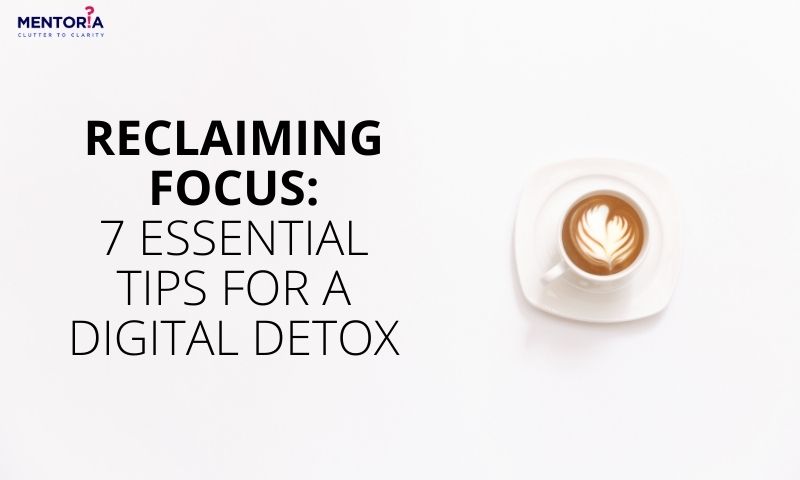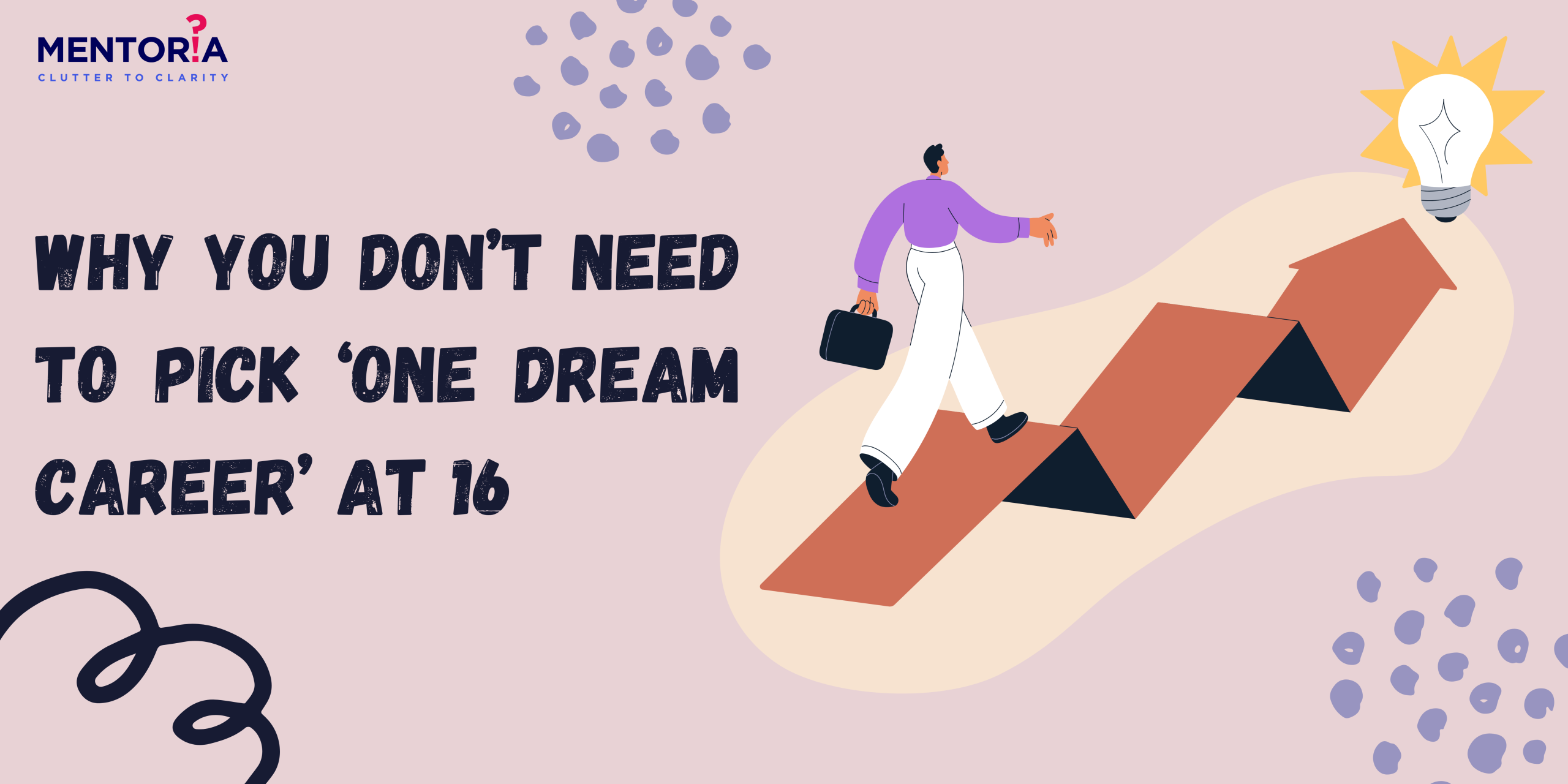Reclaiming Focus: 7 Essential Tips For A Digital Detox

In today’s tech-immersed world, taking a digital detox has become a game-changer against the overwhelming dominance of screens and constant connectivity. It’s like hitting the pause button on the digital avalanche that surrounds us daily. We’re constantly tangled up in our devices, blurring the lines between work and personal time. This non-stop access often ends up zapping our energy, leading to burnout and messing with our mental well-being.
But a digital detox? It’s like a refreshing timeout—a deliberate escape from the digital frenzy, a chance to clear our minds and recharge our batteries.
It’s not just about giving our brains a break. Staring at screens for hours messes with our bodies too! Think disrupted sleep, those pesky eye strains, and those neck cricks from hunching over devices. Stepping back from screens gives our bodies a chance to reset, keeping us healthier and sleeping like babies. And let’s not forget about those real, genuine connections we miss out on while glued to our gadgets. A digital detox is the golden ticket to living in the moment, connecting deeply with ourselves and the people right in front of us.
At its core, a digital detox is our grand reset button—a conscious effort to reclaim control over our lives. It’s like rediscovering a treasure trove of experiences offline, balancing out the constant digital buzz that modern life throws at us. It’s about saying, “Hey, technology, you’re amazing, but I need a breather.”
Step Away From Your Screen
Feeling “off” due to an overload of dopamine receptors is a common repercussion of excessive digital engagement. Our brains are wired to respond to rewarding stimuli, and the constant stream of notifications, likes, and messages triggers the release of dopamine—a neurotransmitter associated with pleasure and reward. When we’re constantly exposed to this flood of stimuli, our dopamine receptors can become desensitised, leading to a diminished ability to derive pleasure from everyday activities. This can manifest as a sense of restlessness, difficulty focusing, or even a persistent feeling of dissatisfaction.
Taking a break from digital devices—a digital detox can work wonders by giving our overloaded dopamine receptors a much-needed breather. By cutting down on the constant digital rewards, we’re actually helping our brains recalibrate. Think of it as hitting the reset button and letting our brains rediscover the joy in life’s more subtle pleasures. Instead of that instant fix from screens, it’s all about savouring activities that don’t rush the satisfaction—like basking in nature’s beauty, getting lost in a good book, or diving into creative hobbies. It’s not just about ditching screens; it’s a deliberate effort to teach our brains to appreciate life’s wonders beyond the instant buzz of digital stuff. It’s like slowing down and tuning into the timeless rhythm of the real world, uncovering experiences that might’ve been lost in the digital chaos.
Now, cutting down on screen time in our tech-dominated world? It’s totally doable! Start with realistic goals, like taking baby steps away from the screens. Use those screen time tracker apps to see how much you’re clocking in and where you can cut back. Designate zones in your space where screens are a no-go, and plan times when screens take a backseat. Oh, and those annoying notifications? Turn ’em off! Finding other activities that don’t involve screens is key—make them your go-to instead of diving into a digital abyss. And hey, get your pals on board! Having friends or fam cheering you on can make all the difference in sticking to your screen-time goals. Remember, it’s a journey—finding that sweet spot of screen time that fits your life and keeps you feeling good.
Digital Fasting
Similar to how intermittent fasting involves cycles of eating and fasting, digital intermittent fasting entails scheduled breaks or periods of abstaining from digital consumption. Taking intentional breaks from screens, social media, emails, and notifications isn’t just about logging off temporarily—it’s about taking back control of our digital habits. This whole idea of digital intermittent fasting is a way to hit pause on our constant tech exposure, aiming to bring some balance back into our lives and reduce the not-so-great effects of too much screen time. By doing this, we’re looking to boost focus, get more stuff done, build real connections, and just generally feel better.
Now, there’s no one-size-fits-all approach to this. It’s not about ditching tech entirely but creating a structured plan to balance our digital time with purposeful breaks. It’s like dieting but for our tech habits! This approach helps us use tech more thoughtfully, allowing us to enjoy staying connected while also relishing the awesome perks of unplugging and being present in the real world.
The fasting periods can vary—from a few hours to a full day. Letting others know about your digital fast is key so they get why you’re MIA during that time. And prepping for the fast? It’s all about tying up digital loose ends—replying to urgent emails or setting those automatic “I’m away” messages. Then, fill up that screen-free time with cool stuff like reading physical books, getting outdoors, or just chilling out without the tech buzz.
Making tech-free zones in your space helps reinforce the boundaries you’ve set. During these breaks, take a breather, kick back, and focus on other parts of your life. Think of digital fasting like taking a power nap from the constant tech buzz—a chance to recharge and look at things from a fresh angle.
Get A Physical Alarm Clock
Investing in a physical alarm clock can be a game-changer when trying to reduce reliance on digital devices, especially smartphones, for waking up in the morning. Getting a physical alarm clock is like a secret trick to dodge that early-morning phone grab. It’s a game-changer in the battle against those sneaky notifications and digital distractions that tempt us as soon as we open our eyes. And here’s the thing—keeping that phone away from your bedside means less exposure to that blue light it emits, the stuff known for messing with our sleep. So, cue the traditional alarm clock as the hero in creating a snooze-friendly sleep zone!
Here’s why it’s a winner: these old-school clocks are super reliable, no pesky battery drain or tech glitches that might mess with your wake-up plans. Plus, having a dedicated alarm clock helps you build a routine. Set that consistent wake-up time without falling into the trap of scrolling through your phone before or after you’re up. That means no morning email bombardments, social media updates, or news sneak peeks—just a smoother, more focused start to your day.
Now, when you’re on the hunt for the perfect alarm clock, there’s a bunch of options out there. Think about what features you want—maybe a snooze button, brightness control, or even radio or soothing sounds to wake you up gently. And picking where to get it from? You’ve got choices! Hit up electronics stores, department spots, or go online to big names like Amazon or Walmart. Scope out the selection, read some reviews, compare prices, and voila—make that choice.
Once you’ve got your hands on that dreamy alarm clock, set it up according to your vibe, find that perfect spot to place it, and get ready for mornings without that phone pull. Trust me, this simple switch can be a game-changer, cutting down screen time, improving sleep quality, and giving you a healthier tech relationship—all from a little clock by your bedside!
Out Of Sight, Out Of Mind
The saying “out of sight, out of mind” is like a little reminder that when things aren’t right in front of us, we tend to forget about them or think about them less. Here’s the lowdown on how to make this work with cutting down device time: First up, stash those gadgets away when you’re not using them. Store them in a different room or a special spot. You know, use containers or drawers to keep things tidy and not so easy to grab. Create tech-free spots in your place—like a no-phone zone—to keep those devices away. Oh, and here’s a cool trick: set up screen limits or parental controls to make it tougher to get sucked into those screens. Keep those chargers far from bedrooms—out of sight, out of mind, right?
To make devices less tempting, try using covers or cases to tone down their appeal. And hey, set times when devices take a backseat—think meal times or hanging out with the fam. Swap out screen time with other stuff you love, like hobbies, workouts, reading actual books, or just hanging with your crew. Mindfulness is key—be aware of when you’re reaching for those gadgets and switch gears to something else.
Oh, and being a good role model matters! Encourage everyone around you to join in on the “out of sight, out of mind” game plan. Remember, making a change with device time takes some practise, but these tricks to keep things out of sight can really help strike a better balance between tech and the real world.
Morning Activities
First up, a stroll outside—super beneficial! Taking a breather from screens, soaking in nature, and getting your body moving—it’s like a mini-reset. Walking’s not just exercise; it’s a chill way to clear your head, ditch stress, and maybe even see things from a new angle. Next in line, showers! Ah, the joy of disconnecting from tech for a bit and just focusing on the here and now. The feeling of water is calming, and taking a shower? Total self-care mode. It’s like hitting pause, letting go of all that mental clutter, and stepping out feeling like a whole new person.
And don’t forget to sweat it out! Working out—whether it’s a full-blown gym session or a quick stretch—fires up your energy, revs up your metabolism, and kicks off the day on a positive note. Bonus: those lovely endorphins that make you feel awesome, boosting your mood and sharpening your mind. Preparing your own breakfast allows you to start the day with a nutritious meal tailored to your liking. It’s a mindful activity that can be both relaxing and creative. Consuming a healthy breakfast fuels your body and brain, setting you up for a productive day.
Taking time to meditate is an excellent way to centre yourself and cultivate mindfulness. It helps reduce stress, improve focus, and promote emotional well-being. Even a few minutes of meditation can have significant benefits for mental clarity and overall calmness. Beginning your day with deep work—immersive, focused work on a meaningful task—allows you to leverage your peak concentration and energy levels. With minimised distractions from technology or external interruptions after your digital detox, you’re better positioned to dive into complex tasks and make significant progress. By incorporating these activities into your morning routine, you’re setting a solid foundation for a balanced and productive day. It’s a thoughtful blend of physical activity, self-care, mindfulness, and focused work, ensuring you start your day on a positive and purposeful note.
Evening Activities
First off, quality hang time with your partner—total win! Ditch those screens and dive into some real connection time. Talk about stuff that matters, cook up a storm together, take a chill walk, or just enjoy being in each other’s company. It’s all about building that closeness, chatting it up, and creating moments you’ll both cherish. Getting artsy or diving into any creative gig—whether it’s painting, doodling, crafting, writing, or jamming out—unleashes your imagination and lets you express yourself. It’s like a therapy session for your creative vibes, sparking fresh ideas and giving you that satisfying “I totally nailed it” feeling. Reading is a fantastic way to unwind and expand your knowledge or imagination. Choose a book that interests you—fiction, non-fiction, self-help, or anything else—and immerse yourself in its world. It’s a great way to relax, learn, and stimulate your mind without screens.
These activities not only contribute to your personal growth and well-being but also create opportunities for meaningful connections with your partner. They provide a welcome break from screens and technology, allowing you to fully engage in the present moment, explore your creativity, and enjoy the pleasures of analog experiences.
Nature Walks
Spending time outdoors exposes you to natural light, fresh air, and the beauty of the natural world. It’s incredibly therapeutic and can have a calming effect on your mind and body. Whether it’s a leisurely stroll, a brisk walk, a jog, or engaging in outdoor sports, being outside encourages movement and physical activity. This contributes to better health, improved mood, and increased energy levels. Being in nature allows you to disconnect from the digital world and be present in the moment. It’s an excellent opportunity to practise mindfulness, observe your surroundings, and relax away from the distractions of screens.
Nature is like a magical muse that fires up your creativity and pumps fresh ideas into your brain. Think about it—the sights, sounds, and smells out there, they’re like a sensorial explosion, sparking new thoughts and ways of seeing things. Whether it’s trekking in the mountains, chilling by the ocean, or just hanging out in a cosy park, stepping into nature during a digital detox is like hitting that reset button. It’s like a soul refresh, plugging you back into the natural world in a way that lifts your spirits and brings you closer to nature’s beauty.
So, when you’re prepping for that nature stroll, pick a cool spot, check the weather, and gear up comfy. Once you’re out there, soak it all in—leave those distractions behind and dive headfirst into the moment. Engage all your senses—listen to the leaves rustle, spot critters, and breathe in those natural scents. Stick to the trails, take breaks when you fancy, and enjoy it at your own chill pace. Afterward, take a sec to mull over what you saw and make sure you leave things just as you found them. And hey, bring pals along, grab a map, and slap on some sunscreen for a safe and kick-butt nature trip. These walks? They’re like a magical escape, serving up moments of zen and a deep appreciation for Mother Nature.
Throughout a digital detox, engaging in activities such as spending time outdoors, nurturing relationships, pursuing creative endeavours, reading, and practising mindfulness fosters a more balanced and fulfilling lifestyle. These activities not only provide a break from screens but also contribute to personal growth, improved relationships, and a greater appreciation for the present moment. Moreover, setting boundaries, communicating the need for uninterrupted time, and establishing healthy habits, such as using physical alarm clocks or dedicating screen-free hours, facilitate a more mindful and intentional use of technology. Ultimately, a digital detox serves as a reminder of the importance of finding a harmonious balance between our digital lives and the analog world, enabling us to lead more enriched, focused, and meaningful lives. It offers a chance to reset, recharge, and rediscover the beauty and richness of life beyond the screens.
Boosting Your Focus Through Mentoria
By temporarily disconnecting from technology, we can reconnect with ourselves, strengthen our relationships, and rediscover the simple joys that often get overlooked in our hyperconnected world. Mentoria’s experienced career counsellors provide personalised guidance and support as you navigate the complexities of career planning and decision-making. They can help you identify your strengths, develop a strategic plan, and overcome any obstacles that may be hindering your progress. We can also help you establish clear goals and develop effective time management skills, which are essential for reducing digital distractions and staying focused on your priorities.









